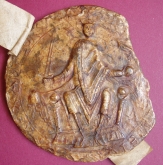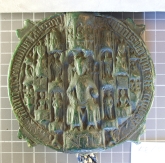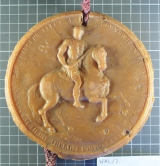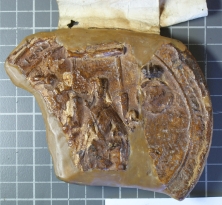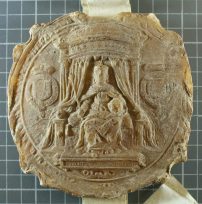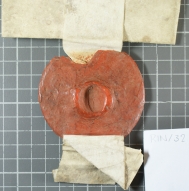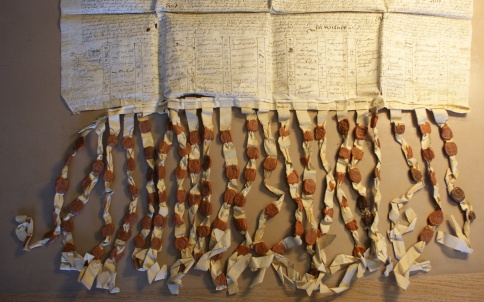Archivist’s note: Carmen Omitowoju has been volunteering in the Archive Centre during her gap year. Part of her contribution has been to a project enhancing our catalogue descriptions where documents contain wax seals, and taking photographs of them (most of the images below were taken by Carmen). Here she reflects on her experience.
Before this project seals were very unfamiliar to me, one of my favourite things about the project was the opportunity of having a completely new way of looking at and thinking about the past. The collection at King’s illustrates the fascinating changes that have happened in the British Isles, and the evolution of popular heraldic, artistic and architectural styles are reflected in the seals.
I thought that the differences between the great seal of King Stephen [GBR/22] and that of Henry VI [KCE/990] were quite interesting: GBR/22 shows Stephen holding a sword and orb while Henry holds the more familiar orb and sceptre.
I wondered how deliberate this was, and if it shows a develop-ment in what it meant to be the King of England. In most great seals, they are depicted with a sword and in armour on the back of their seal, so the fact that Stephen was also shown as a warrior on this side of the seal stood out. From various records I found that the kings seemed to be represented like Stephen up to and including Henry III, and with Edward I the more familiar orb and sceptre became the norm.
As well as this, you can see the development in artistic and architectural styles with the ornate late gothic canopy and tabernacles. The seal of George II, this copy from 1749, shows a much more classical influence, especially on the reverse where he is wearing Roman-style armour. This reflects the growing neoclassical style in Europe at the time, and maybe suggests a reliance on the imagery of Imperial Rome to assert power.
When looking at SEA/4, it was originally catalogued as the great seal of Elizabeth I, but a few details seemed to resemble more the seal of Mary I, like the style of hair and clothes, and the throne that she is sitting on. This was one of my favourite parts of the project: it felt a bit like solving a puzzle – trying to work out which details and differences were note-worthy.
I also loved the close-up view of history: there’s some element of the seals that feel deeply personal and it’s a great privilege to be able to be so close to them, like the knuckle prints in the back of seals such as RIN/32. Some of the seals also
tell you a lot about the people involved, RUI/32 being one of the best examples of this. The document is a 1579 composition between King’s College and the copyhold tenants of Ruislip over fines, signed and sealed by all the tenants. There is a vast diversity in the seals themselves, from more ornate impressions, to simple initials, to just blank balls of wax. I liked these details, seeing the signatures of these relatively ordinary people from hundreds of years ago.
Some of my favourite seals were those of the 15th century nobles, significant in the Hundred Years War and the Wars of the Roses. For example, the owner of RIN/26 was the father of Richard Neville, Earl of Warwick – ‘The Kingmaker’ – an important military commander and an integral part of the deposition and later restoration of Henry VI. FOR/43 belonged to Humphrey, Duke of Buckingham – a descendant of Edward III and a major military figure of the time. These seals were some of the most exciting for me – they felt like such a vivid window into the period with the recognisable coats of arms and knight’s helmets and all of the other ‘textbook’ medieval flourishes.
CO

